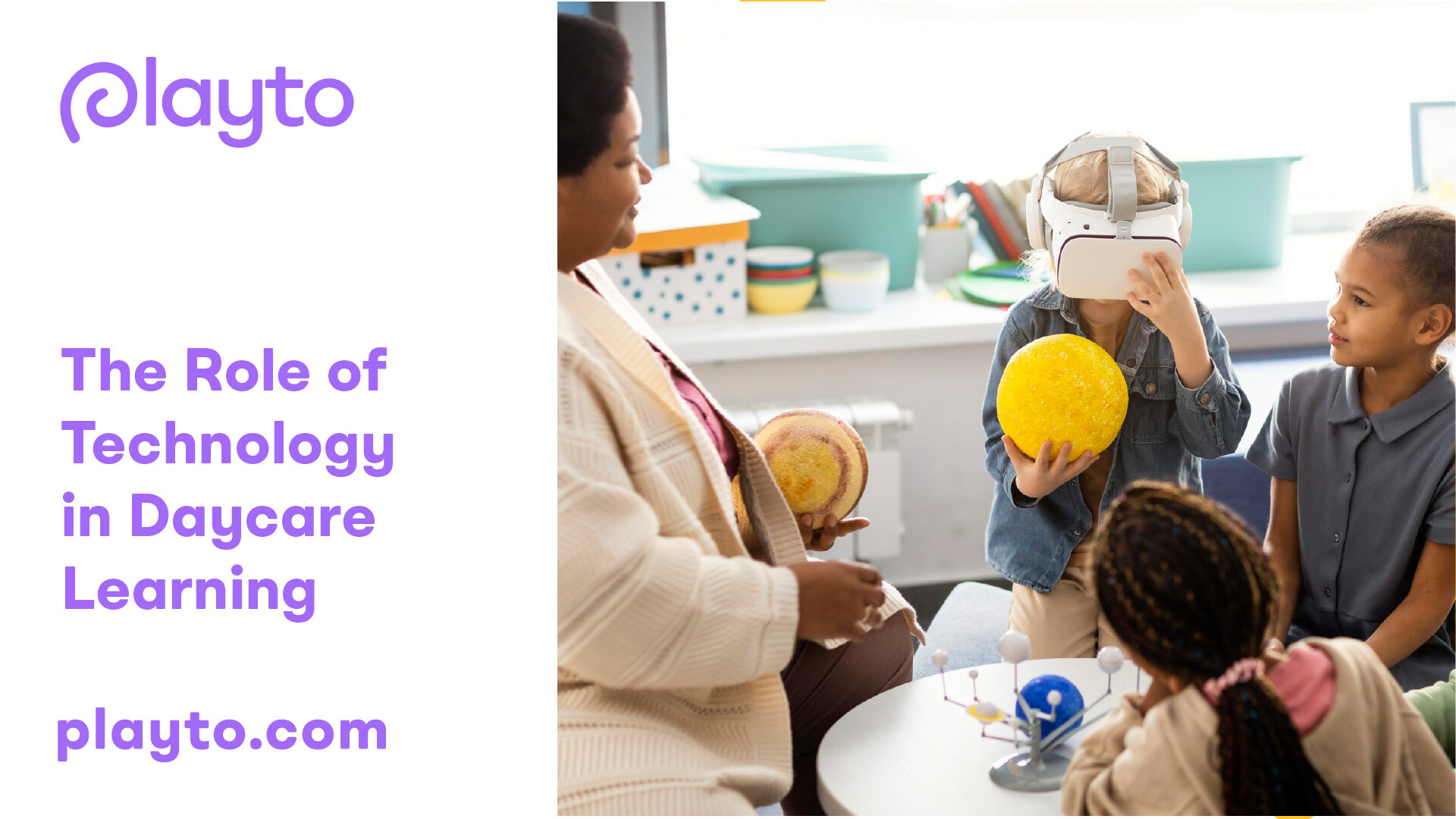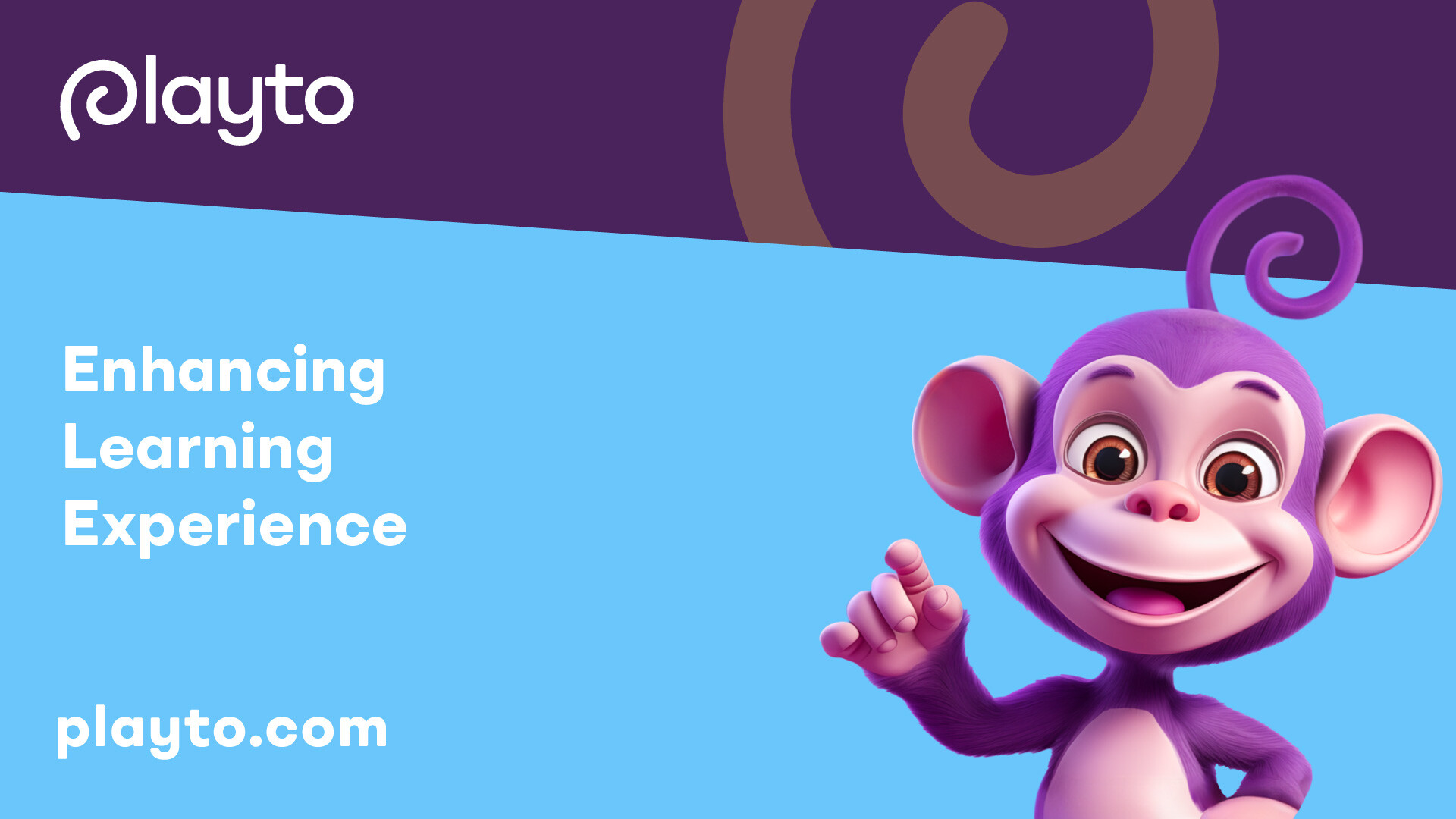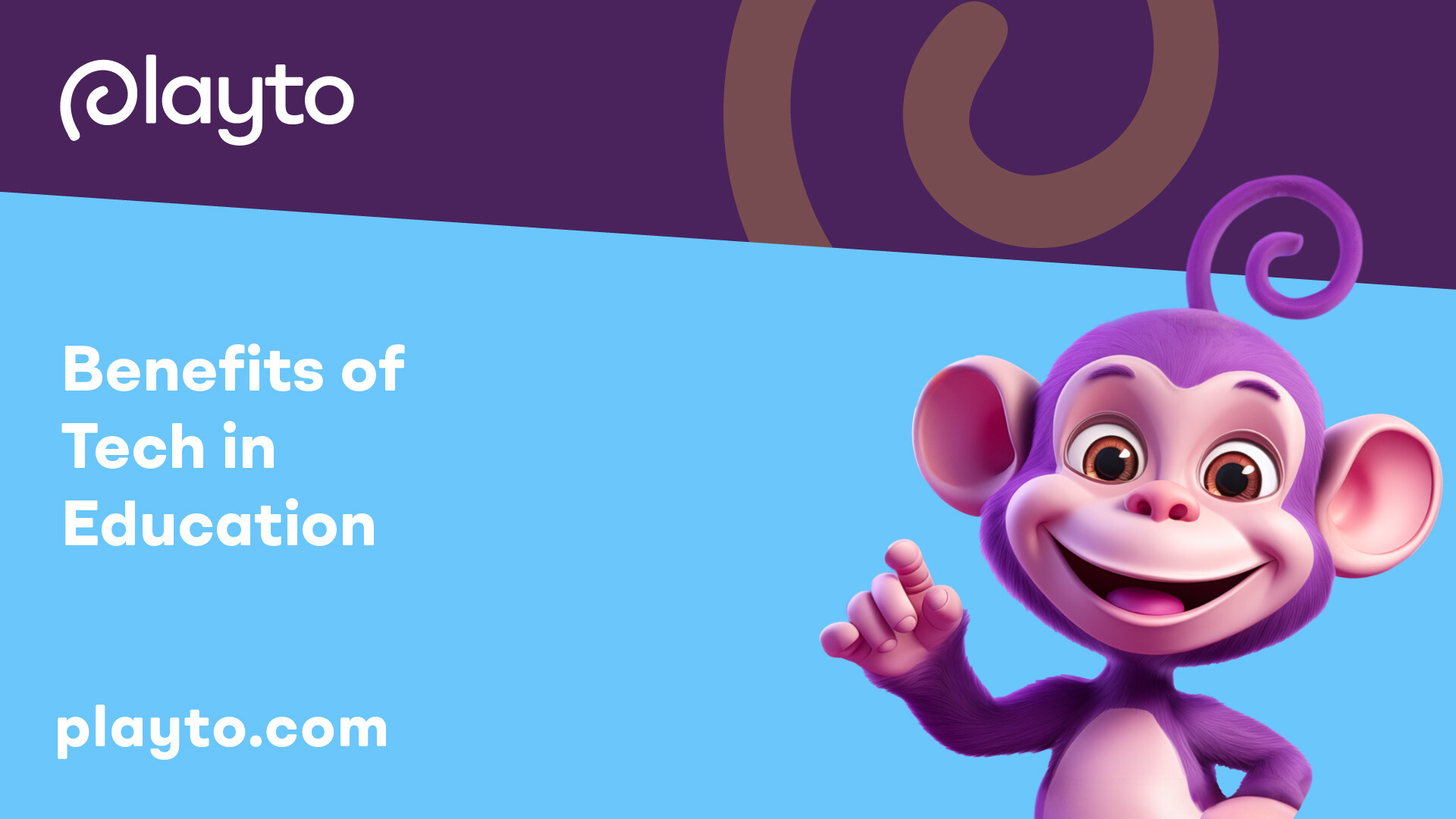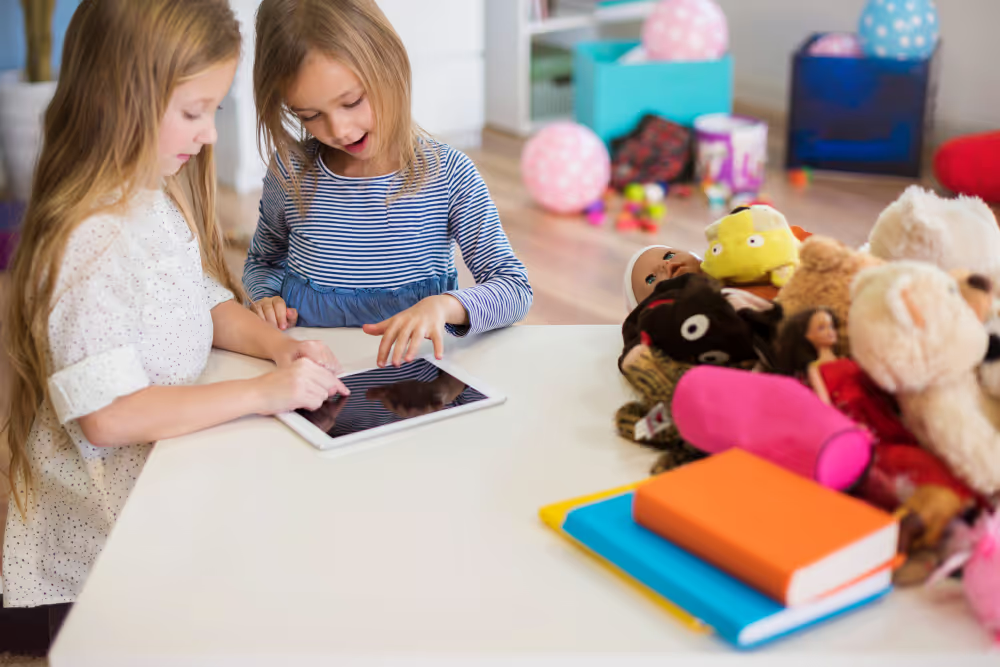Technology in Early Childhood Education

In the realm of early childhood education, technology has played a significant role in shaping the learning experiences of young children. Over the past 50 years, technology has evolved from the use of televisions to personal computers and smart devices, such as phones, tablets, and apps. This transformation has had a profound impact on guiding the development of young children.
Evolution of Tech in Education
The use of technology in early childhood education has come a long way. From the introduction of educational television programs to interactive apps and multimedia tools, technology has offered innovative ways to engage young learners. These advancements have allowed educators to create interactive and engaging learning experiences that cater to the unique needs and interests of children.
Concerns and Recommendations
While technology has opened new avenues for learning, concerns have been raised regarding the passive use of screen media in early childhood programs. Public health organizations and child advocacy groups recommend avoiding the use of passive, non-interactive technology and screen media in early childhood settings due to potential health issues such as obesity and irregular sleep patterns [1].
To ensure the responsible and effective use of technology in daycare settings, it's crucial for educators and caregivers to adhere to recommended guidelines. The American Association of Pediatrics recommends no screen time for children under two years old and no more than two hours per day for children over two years old, including TV, computer, DVD, or video games [2]. The Institute of Medicine (IOM) suggests limiting screen time for children aged two to five to fewer than 30 minutes in half-day early learning programs and no more than 60 minutes in full-day early learning programs.
By adhering to these recommendations, educators and caregivers can strike a balance between leveraging the benefits of technology and promoting healthy development in young children. It is important to remember that technology should never replace essential aspects of early childhood education, such as hands-on experiences, social interactions, and the importance of reading [3]. When used appropriately and in moderation, technology can enhance learning experiences and support the development of essential skills in young children.
Enhancing Learning Experience

In the context of early childhood education, technology plays a significant role in enhancing the learning experience for young children. Whether it's through interactive apps, educational videos, or digital tools, technology can be tailored to meet the needs of different learners and provide them with engaging and effective learning opportunities. Two important aspects of enhancing the learning experience through technology are tailoring lessons for different learners and following guiding principles for tech use.
Tailoring Lessons for Different Learners
Technology in early childhood education allows educators to create lessons that cater to various learning styles, including visual, reading/writing, auditory, and tactile/kinesthetic learners. By incorporating a variety of teaching methods, technology enhances the educational experience for young children [1].
For visual learners, technology offers visual aids such as colorful graphics, images, and videos that can help them grasp concepts more effectively. Reading/writing learners can benefit from interactive apps and digital platforms that provide opportunities for reading, writing, and word recognition. Auditory learners can engage with educational videos, audio recordings, and interactive stories that reinforce learning through sound. Tactile/kinesthetic learners, on the other hand, can benefit from touchscreen devices and interactive tools that allow them to physically interact with the content and participate in hands-on activities.
By tailoring lessons to different learning styles, technology ensures that all children have the opportunity to actively engage in their education through play, problem-solving, and interactive experiences.
Guiding Principles for Tech Use
To maximize the benefits of technology in early childhood education, it is essential to follow guiding principles for its use. The Department of Education outlines four guiding principles that should be considered when incorporating technology into the classroom (Brightwheel):
- Technology as a Tool for Learning: Rather than being the sole focus of the learning experience, technology should be seen as a tool that supports and enhances learning outcomes. It should be used in conjunction with other educational approaches and activities.
- Increased Access to Learning Opportunities: Technology can bridge gaps and provide equal access to learning opportunities for all children, regardless of their background or abilities. It can create a more inclusive and equitable learning environment.
- Strengthened Relationships: Technology can strengthen relationships among parents, families, educators, and children. It can facilitate communication and collaboration, enabling parents and educators to work together to support children's learning and development.
- Adult Interaction: Technology is most effective when adults and peers interact or co-view with young children. By engaging in joint exploration and discussion, adults can guide children's learning experiences and help them make connections between the digital content and the real world.
By following these guiding principles, educators can ensure that technology is used in a purposeful and meaningful way, supporting children's learning and development in early childhood education settings.
Incorporating technology in early childhood education allows for the tailoring of lessons to different learning styles and the application of guiding principles for its use. By leveraging technology effectively, educators can create a more engaging and interactive learning experience for young children, setting them on a path of discovery and growth.
Creative Outlets and Learning Resources
When it comes to early childhood education, technology can serve as both a creative outlet and a valuable learning resource for young children. By incorporating technology in daycare settings, educators can provide an abundance of learning opportunities in the classroom [1]. Let's explore how technology can be used as a creative tool and enhance learning experiences for children in daycare.
Technology as a Creative Tool
Technology can act as a powerful tool for fostering creativity in young children. Drawing and painting programs and apps, for example, provide opportunities for children to express themselves artistically and explore their imagination [4]. By using digital platforms, children can experiment with colors, shapes, and textures, creating their own unique masterpieces.
In addition to traditional art activities, technology can also offer digital play experiences that simulate real-world scenarios. For example, role-playing games and interactive apps can provide children with opportunities to engage in imaginative play, fostering their creativity and problem-solving skills. By incorporating real and toy technology into their play, children can explore and make sense of the digital world around them.
Learning Opportunities in the Classroom
Technology in the classroom can provide a wide range of learning opportunities for young children. It can be used to connect children with others, facilitate research and exploration, and promote various educational activities [5]. Here are some examples of how technology can enhance learning experiences in daycare:
- Digital Storytelling: Children can create and share their own digital stories using storytelling apps. This not only enhances their literacy skills but also allows them to express their creativity and imagination.
- Creative Apps: There are numerous creative apps available that allow children to engage in activities such as music composition, animation, and digital puppetry. These apps encourage children to explore their artistic abilities and develop their fine motor skills.
- Robotics: Introducing robotics in daycare settings can provide children with hands-on experiences in coding and problem-solving. This can spark their interest in STEM (Science, Technology, Engineering, and Mathematics) subjects from an early age.
By incorporating technology into the daycare curriculum, educators can create a dynamic and engaging learning environment for children. However, it's important to remember that technology should be used as a tool to enhance learning, rather than replace traditional hands-on experiences. It should be integrated in a balanced and age-appropriate manner, keeping in mind the individual needs and interests of each child.
In the next section, we will explore strategies for effectively integrating technology and developing technological literacy in daycare settings.
Integration Strategies
To effectively incorporate technology into daycare learning, it is important to consider strategies that promote both technological literacy and creativity. These strategies will not only help children develop essential digital skills but also foster their imagination and problem-solving abilities.
Developing Technological Literacy
Developing technological literacy in early childhood education is key to preparing children for the digital world. By engaging in meaningful activities that integrate technology, children can develop the necessary skills and understanding to navigate and utilize digital tools effectively. This can be achieved through the following approaches:
- Context-driven activities: Integrating technology into the early years curriculum should involve meaningful and context-driven activities. By using content-free software that is intellectually challenging, children can develop their technological literacy while exploring various concepts and subjects.
- Digital play: Technology can be utilized to promote digital play, offering quality role-playing opportunities that help children make sense of the digital world. This includes providing real tech that works, tech that doesn't work, tech made by children, and toy technology simulating real technologies. Such experiences allow children to explore and understand the functions and possibilities of technology in a playful and engaging manner.
- Web searching: Introducing children to the World Wide Web and teaching them how to use keywords for searching can enhance their technological literacy. Guiding children to search for interesting things online not only helps develop their research skills but also exposes them to the vast array of information available on the internet.
Encouraging Creativity
Creativity is a fundamental aspect of early childhood education, and technology can be a powerful tool to encourage and enhance children's creative expression. Here are some ways to incorporate technology to foster creativity:
- Drawing and painting programs and apps: Technology can provide children with opportunities to explore their artistic abilities through drawing and painting programs and apps. These tools offer a range of digital brushes, colors, and effects, allowing children to experiment and create digital artwork.
- Digital storytelling: Technology can be utilized to engage children in digital storytelling activities. With the help of storytelling apps, children can create their own narratives, incorporating images, sounds, and even animations. This not only enhances their creativity but also develops their storytelling and communication skills.
- Robotic and coding activities: Introducing robotics and coding activities in daycare settings provides children with hands-on experiences that foster creativity and problem-solving. By using age-appropriate robotics kits and coding platforms, children can design and program their own robots, encouraging them to think critically and creatively.
By implementing these integration strategies, daycare centers can effectively develop technological literacy and encourage creativity in young learners. It is important to remember that technology should be used as a tool to enhance learning experiences and support children's development, rather than replacing traditional forms of play and interaction. By striking a balance between technology and other activities, educators can create a well-rounded and engaging learning environment for children in daycare settings. To learn more about specific aspects of daycare, such as technology use, reading, and emergency preparedness, explore our articles on technology use in daycare: pros and cons, the importance of reading in daycare settings, transitioning from home care to daycare, and daycare emergency preparedness plans.
Benefits of Tech in Education

Technology plays a significant role in enhancing the learning experience in early childhood education settings. When used appropriately, technology can serve as a valuable tool for learning and supporting school readiness. Let's explore these benefits in more detail.
Tool for Learning
Integrating technology into early childhood education allows educators to create lessons that cater to different learning styles, such as visual, reading/writing, auditory, and tactile/kinesthetic learners. This versatility enhances the educational experience for young children, as highlighted by Brightwheel. Through interactive apps, educational software, and multimedia resources, children can engage with content in ways that align with their unique learning preferences.
Technology also acts as a creative outlet and learning resource for preschool-age children. As mentioned by Brightwheel, it provides an abundance of learning opportunities in the classroom when used appropriately and creatively. Children can explore various topics of interest, conduct research, and engage in role-playing experiences that enhance their understanding of the world around them.
Supporting School Readiness
Technology in early childhood education supports the development of essential skills that contribute to school readiness. According to ICTE Solutions Australia, technology can be used to connect children with others, promote creativity through apps, facilitate robotics for coding skills, and enhance role-playing experiences. These activities help children develop cognitive, social, and emotional skills that are crucial for their transition into formal schooling.
Furthermore, technology serves as a tool to inspire collaboration among children. By engaging in digital projects and interactive activities, children learn to work together, communicate effectively, and solve problems collaboratively. This collaborative learning environment fosters a sense of connectedness and encourages children to develop important social skills.
The benefits of technology in early childhood education extend beyond individual learning. It supports a well-rounded curriculum, aids in school readiness, and inspires a love for learning. By leveraging technology effectively, educators can provide children with engaging and interactive learning experiences that prepare them for a successful educational journey.
As childcare centers recognize the value of technology, the adoption of technology-driven solutions is on the rise. The childcare management software market is expected to reach a value of USD 329.43 Million by 2030, growing at a CAGR of 7.8% from 2023, according to Illumine. This adoption allows for automated administrative tasks, streamlined processes, and enhanced parent communication, ultimately saving time and improving the overall childcare experience.
In conclusion, technology serves as a powerful tool for learning and supports school readiness in early childhood education. By incorporating technology into the curriculum, educators can create engaging and interactive learning experiences that cater to the diverse needs of young children, preparing them for a successful educational journey.
Data-Driven Practices in Childcare
As the field of childcare continues to evolve, data-driven practices are playing a significant role in providing personalized learning experiences for children. Childcare centers are leveraging data collection and analysis to tailor educational approaches and create a more individualized learning environment. This section will explore two key aspects of data-driven practices in childcare: personalized learning experiences and tailoring educational approaches.
Personalized Learning Experiences
Childcare centers are embracing data-driven practices to offer personalized learning experiences for children. By collecting and analyzing data on academic progress and social-emotional growth, centers can gain valuable insights into each child's unique needs and create tailored learning experiences. This approach allows for customized instruction and support, ensuring that children receive the individual attention necessary for their development and growth.
Data-driven practices in childcare enable teachers and caregivers to identify areas where children may need extra support or extension. By tracking their progress and understanding their strengths and weaknesses, educators can adjust their teaching methods and materials to meet the specific needs of each child. This personalized approach fosters a more engaging and effective learning experience, promoting academic growth and overall development.
Tailoring Educational Approaches
In addition to personalized learning experiences, data-driven practices in childcare also involve tailoring educational approaches to meet the diverse needs of children. By analyzing data on enrollment trends, preferences, and learning outcomes, childcare centers can optimize their operations and adapt their curricula to better serve the children in their care.
Childcare centers can use data to identify trends and patterns in children's learning styles and preferences. This information allows educators to design and implement instructional strategies that align with individual learning needs. For example, if data shows that certain children respond well to visual learning, teachers can incorporate more visual aids and materials into their lessons. By tailoring educational approaches, childcare centers can create a more inclusive and effective learning environment for all children.
To support data-driven practices in childcare, the adoption of technology is essential. Childcare management software, for example, enables centers to collect and analyze data efficiently, automate administrative tasks, and streamline processes. This technology also facilitates communication with parents, allowing for updates on a child's progress and important announcements. The engagement of parents through technology has shown to positively impact a child's enthusiasm and active participation in classroom activities.
In conclusion, data-driven practices in childcare are transforming the learning experience for children. By personalizing learning experiences and tailoring educational approaches, childcare centers can meet the unique needs of each child and create inclusive environments. With the adoption of technology and the thoughtful analysis of data, childcare centers can optimize their operations and provide a high-quality educational experience for children in their care.
